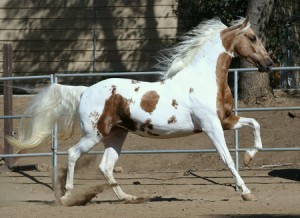Introduction.
American Saddlebred horses are extremely alert and curious, they are highly intelligent, people-oriented horses. Most Saddlebreds are said to possess that indescribable quality personality, which endears them to their owners and admirers. The Saddlebred differs from other horses in conformation, temperament, and heritage, giving him unique and desirable qualities.
History.
By the late 1700s, the American Saddlebred was being recognized as a unique and individual horse type, referred to as the “American Horse.” With the continued addition of Thoroughbred blood to easy gaited horses, breeders saw they were creating a distinct breed. In the 1880s, breeders of this unique horse type began to call for the formation of a breed association and registry.
Charles F. Mills began compiling pedigrees and formulating rules for a registry. Shortly thereafter, The Farmers Home Journal, a newspaper in Louisville, Kentucky, called for a meeting on April 7, 1891. Thus, on that day, the American Saddle-Horse Breeders Association* was established in Louisville, Kentucky. Under the leadership of the first Association President, John B. Castleman, the objectives of collecting, recording and preserving the pedigrees of saddle-horses in America began.
In 1908, after years of discussion, the Association formally acknowledged Denmark F.S. as the sole Foundation Sire of the American Saddle Horse. However, in 1991, after careful review of bloodlines, Harrison Chief 1606 was also named a Foundation Sire for his contribution to the formation of the breed.
Foundation.
The American Saddlebred horse can trace its roots to the natural gaited Galloway and Hobby horses which came to North America from the British Isles. These hardy little horses thrived and grew in the new environment, and through selective breeding the Narraganset Pacer was developed along the eastern seaboard.
The Narragansets were crossed with Thoroughbreds imported to America in the early 1700s, and by the time of the Revolutionary War, a horse called simply “the American horse” was a recognized type. There continued to be crossings with Thoroughbreds, along with other breeds including Arabian and Morgan. And by 1891 the Saddlebred was being recognized as a distinct breed and the American Saddle-Horse Breeders Association (now American Saddlebred Horse Association) was established.
Type.
The American Saddlebred horse is easily identified, as he differs from other breeds in the head and neck, the feet and legs, and the top line. The breed presents a well-proportioned horse with the average height of 15 to 16 hands and weight of 1,000-1,200 pounds. The conformation of the American Saddlebred enables him to perform well at almost anything asked of him.
Today awalk, trot, canter, slow gait, and rack. The slow gait and rack were developed from the easy-riding gait traits the Saddlebred had inherited. Along with their ability in the traditional show ring, American Saddlebreds are also successful in most equine disciplines, from cow horses to jumpers, dressage to carriage horses. If conditioned and trained properly, Saddlebreds are capable of almost any task they are asked to perform and they do it with style.
Colors.

American Saddlebred Horse
The American Saddlebred comes in any color, but chestnut, bay, and black are most popular. However, there are also grays, roans, Palominos, and Pintos.





















